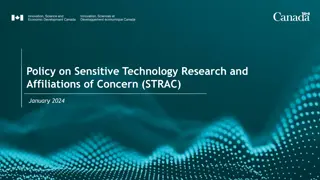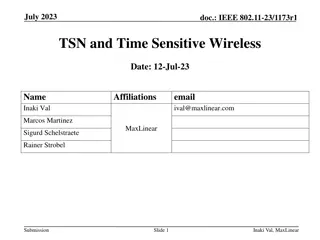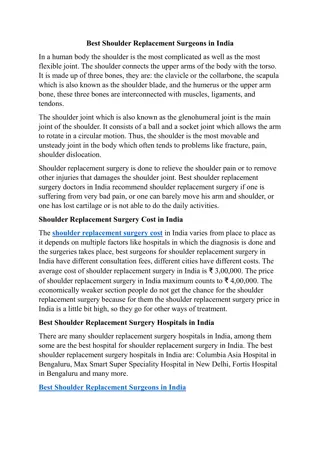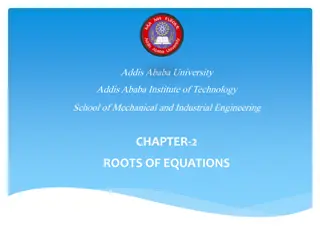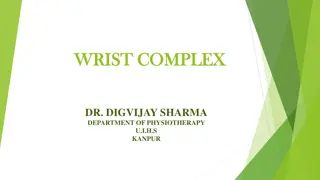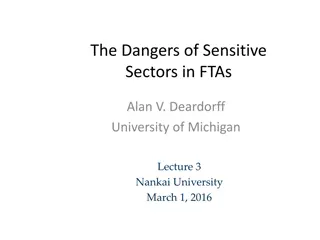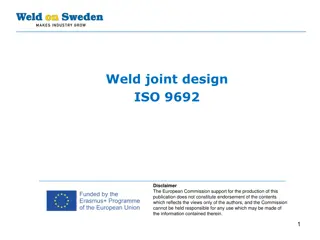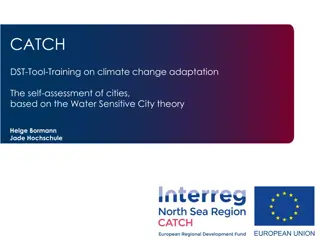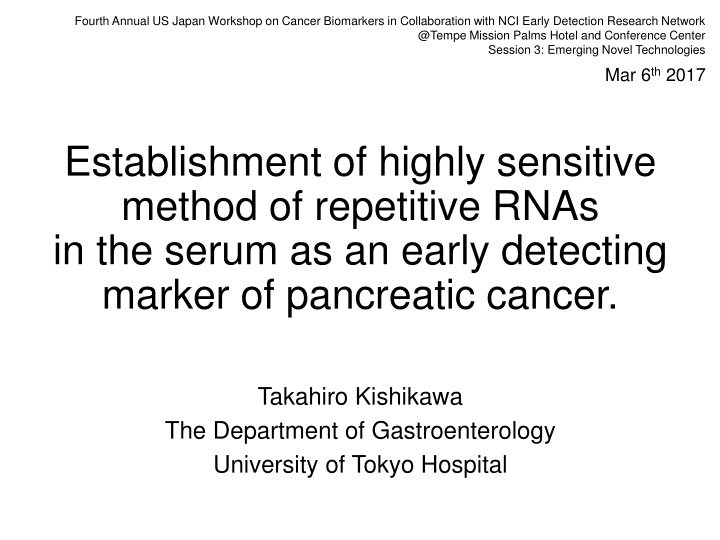
Emerging Technologies for Pancreatic Cancer Biomarkers
Learn about the groundbreaking research presented at the Fourth Annual US-Japan Workshop on Cancer Biomarkers, focusing on the development of a highly sensitive method for detecting pancreatic cancer early using RNAs in serum. The workshop highlighted the growing issue of pancreatic cancer in Japan, its poor prognosis, and the urgent need for effective early detection methods. Explore the innovative approach by Takahiro Kishikawa from the University of Tokyo Hospital that could revolutionize how pancreatic cancer is diagnosed and treated.
Download Presentation

Please find below an Image/Link to download the presentation.
The content on the website is provided AS IS for your information and personal use only. It may not be sold, licensed, or shared on other websites without obtaining consent from the author. If you encounter any issues during the download, it is possible that the publisher has removed the file from their server.
You are allowed to download the files provided on this website for personal or commercial use, subject to the condition that they are used lawfully. All files are the property of their respective owners.
The content on the website is provided AS IS for your information and personal use only. It may not be sold, licensed, or shared on other websites without obtaining consent from the author.
E N D
Presentation Transcript
Fourth Annual US Japan Workshop on Cancer Biomarkers in Collaboration with NCI Early Detection Research Network @Tempe Mission Palms Hotel and Conference Center Session 3: Emerging Novel Technologies Mar 6th2017 Establishment of highly sensitive method of repetitive RNAs in the serum as an early detecting marker of pancreatic cancer. Takahiro Kishikawa The Department of Gastroenterology University of Tokyo Hospital
Pancreatic cancer in Japan: the 4th leading cause of cancer death (%) 100 x103 80 Lung 70 80 5 year survival rate Estimated death 60 60 Stomach Colorectal 50 40 40 Pancreas 30 20 Liver Biliary tract Esophagus 20 0 10 Prostate Pancreas Biliary tract Colorectal Uterus Blest Esophagus Leukemia Stomach Bladder Skin Lung Lymphoma Kidney Liver Ovary Thyroid Pancreas 0 1968 1978 1988 1998 2008 Pancreatic cancer patients are increasing and prognosis is extremely poor. Approx. 80% of patients are detected at advanced stage. There is no sufficient early detecting marker useful for 1st screening.
Non-coding satellite sequence Mainly located near the centromeric region. Highly repetitive array randomly including 5-25 base core unit Chromosome HSATII core sequence ttgaatggaatcgaatggaatcatcagatggaaatgaattgaatcgtcatagaatgg ttgaatggaatcgaatggaatcatcagatggaaatgaattgaatcgtcatagaatgg aatcgaatggattcattgaatggaatcagatgga aatcgaatggattcattgaatggaatcagatggaatcatcgaatggactggaatgga atcat atcattgaatggactc tgaatggactcgaaaggaatcatcatcaaatggaaccgaatgaatcct gaaaggaatcatcatcaaatggaaccgaatgaatcctcatt gaatggaaatgaaaggggtcatcatctaatggaatc gaatggaaatgaaaggggtcatcatctaatggaatcgcatggaatcatcatcaaatg gaatcgaatggaatcat gaatcgaatggaatcatcatcaaatggcaatctaatggaatcattgaacagaattga catcaaatggcaatctaatggaatcattgaacagaattga atggaatcgtcatcgaatgaattgaatgcaatcatcgaatggtctcgaatggaatca atggaatcgtcatcgaatgaattgaatgcaatcatcgaatggtctcgaatggaatca tcttctaatggaaaggaatggaatcatcgcatagaatc tcttctaatggaaaggaatggaatcatcgcatagaatcgaatggaattatcatcgaa tggaatcgaatggtatcaaa tggaatcgaatggtatcaaacggaaaaaaacggaattatcgaatggaatcgaagaga cggaaaaaaacggaattatcgaatggaatcgaagaga atcttcgaacggaccc atcttcgaacggacccgaatggaatcatctaatggaatggaatggaataat gaatggaatcatctaatggaatggaatggaataatccactg gactc gactcgaatgcaatcatcatcgaatggaatggaatggaatcat gaatgcaatcatcatcgaatggaatggaatggaatcatcgaatggactcgaa tggatggaacattgaatcgaatggaatcatcaatcggatggaaacgaatggaatcat tggatggaacattgaatcgaatggaatcatcaatcggatggaaacgaatggaatcat catcgaatggaaatgaaaggagtcatcatctaatggaattgcatggaatcatcataa catcgaatggaaatgaaaggagtcatcatctaatggaattgcatggaatcatcataa aatggaatcgaatggaatcaacatcaaatggaatcaaatggaatcattgaacggaat aatggaatcgaatggaatcaacatcaaatggaatcaaatggaatcattgaacggaat tgaatggaatcgtcatcgaatgaattgactgcaatcatccaatggtcgc tgaatggaatcgtcatcgaatgaattgactgcaatcatccaatggtcgcgaatggaa tcatcttcaaatggaatggaatggaatcat tcatcttcaaatggaatggaatggaatcatcgcatagaatc gaatggaatcgaatggaatcaa gaatggaatcgaatggaatcaacatccaacggaaaaaaacggaattatcgaatggaa catccaacggaaaaaaacggaattatcgaatggaa tcgaagagaatcatcgaatggacccgaatggaatcatctaatggaatggaatggaat tcgaagagaatcatcgaatggacccgaatggaatcatctaatggaatggaatggaat aatccatggactc aatccatggactcgaatgcaatcatcatcgaatggaatcgaatggaatcat gaatgcaatcatcatcgaatggaatcgaatggaatcatcgaatg gactcgaatggaataatcattgaacggcatcgaatggaatcatcatcggatggaaat gactcgaatggaataatcattgaacggcatcgaatggaatcatcatcggatggaaat gaatggaatcatcatcgaatggaatcgaatagaattat gaatggaatcatcatcgaatggaatcgaatagaattatggaatgaaatccagtgtga atcatcgaatggactggaatgga catt gcatggaatcatcatcaaatg Centromere gaatggaattatcatcgaa ccactg cgaatggactcgaa gaatggaa cgcatagaatcgaatggaattatcatc gaatggaattatcatc -Difficult to analyze -transcription is epigenetically silenced cgaatg ggaatgaaatccagtgtga Example of satellite sequence
Transcripts from HSATII sequences are aberrantly increased in pancreatic cancer tissues (HSATII: human satellite 2) Transcriptome analysis by high throughput RNA-seq HSATII RNA Tissue > non-invasive (blood) 6000 Reads (copies/sample) 5000 4000 3000 RNA-seq > more convenient 2000 1000 0 Pancreatic cancer Normal pancreas Could be a novel useful biomarker? Ting et al: Science 2011 (partial modification)
Satellite RNAs are transcribed from multiple pericentromeric region in various lengths Northern Blotting Normal Cancer 8,000 Schema of HSATII RNAs HSATII 1,000 Core unit of HSATII 200 -ACTIN 1,000 nt
Satellite RNAs are difficult to correctly quantitate by real-time RT-PCR RT-PCR for satellite RNA RT-PCR for usual mRNA mRNA primer PCR products Same products according to the number of cycles Various PCR amplicons in heterogeneous lengths due to their repetitive nature
Tandem Repeat Amplification of nuclease Protection (TRAP) method Hybridize with RNA probe complementary for core sequence of HSATII RNA HSATII RNA Unbinded probes Other mRNAs core sequence of HSATII biotinylated complementary RNA probe
Tandem Repeat Amplification of nuclease Protection (TRAP) method Hybridize with RNA probe complementary for core sequence of HSATII RNA HSATII RNA Unbinded probes Other mRNAs core sequence of HSATII biotinylated complementary RNA probe
Tandem Repeat Amplification of nuclease Protection (TRAP) method Digestion single stranded RNA by RNase A/T1 Protection HSATII RNA Unbinded probes Other mRNAs core sequence of HSATII biotinylated complementary RNA probe
Tandem Repeat Amplification of nuclease Protection (TRAP) method Only protected core arrays are collected with condensation Condensation and alignment HSATII RNA Suitable for PCR Unbinded probes Other mRNAs core sequence of HSATII biotinylated complementary RNA probe
HSATII RNA is condensed and aligned in same length by TRAP method Normal Cancer Serial dilution of HSATII-including oligo template NB 8,000 HSATII 1,000 200 HSATII TRAP 21 (1,000-fold dilution) nt
Droplet digital PCR is suitable for accurate quantitation of minute sample Droplet digital PCR Low CV in digital PCR in measuring HSATII RNA Bio-Rad Laboratories, Inc Digital PCR Realtime PCR 47.5% 11.3%
HSATII RNA measurement in patients serum Training set Control (n = 20) 64.55 13:7 2.9 23.5 N.A. N.A. Cancer (n = 20) 67.4 11:9 3.75 281 3.25 I~III:3 IV:17 P value Age 0.44 0.52 0.17 0.02 Sex(M:F) CEA (ng/ml) CA19-9 (U/ml) Tumor size (cm) Stage Patients who were hospitalized or outpatient clinic from Mar. 2014 to Apr. 2015 RNAs were extracted from 400 l serum
HSATII RNA is highly detected in cancer patient in the training set HSATII RNA levels p < 0.001 ROC curve AUC = 0.80 AUC = 0.92 Control (n = 20) Cancer (n = 20) CA19-9 HSATII Median 3.17 14.75
Confirmation of quality of HSATII RNA as a biomarker Validation set Control (n = 10) 60.2 7:3 3.5 15 N.A. N.A. IPMN (n = 10) 75.1 6:4 2.65 13.5 2.55 N.A. Cancer (n = 10) 69.9 8:2 3.95 160.5 2.0 I~III:5 IV:5 Age Sex(M:F) CEA (ng/ml) CA19-9 (U/ml) Tumor size (cm) Stage Patients who were hospitalized or outpatient clinic from May to Dec. 2015 RNAs were extracted from 400 l serum IPMN: intraductal papillary mucinous neoplasm
The efficacy of HSATII RNA is confirmed in validation set HSATII RNA levels p = 0.04 ROC curve p = 0.01 AUC = 0.93 AUC = 0.90 CA19-9 HSATII Cancer (n = 10) 17.35 Control IPMN (n = 10) 2.9 (n = 10) 17.15 Median
HSATII RNA was detectable even in precancerous patients IPMN IPMN + cancer AUC=0.69 AUC=0.82 AUC=0.55 AUC=0.75 CA19-9 HSATII
Superiority of satellite RNA as a serum biomarker Novelty as target of RNA marker excluded from current comprehensive analysis Sharpness of detection Discriminable by a single marker No need to set inner control Biological rationale Satellite RNA induces genomic instability and chromosome instability Kishikawa Nat Commun 2016; Zhu. Cell 2011; Bersani. PNAS 2015
Future plans Prospective studies with larger cohorts unbiased and age-matched inclusion adding benign pancreatic disease group e.g. chronic pancreatitis, autoimmune pancreatitis appropriate starting volume of serum Identifying new subset of serum repetitive RNA detect early change of carcinogenesis more sensitively combined use with HSATII RNA
Summary TRAP method: a novel amplification procedure dedicated to highly repetitive RNAs. overcome their repetitive nature and heterogeneities which impair quantitative of conventional real-time PCR. Serum HSATII RNA: possibility of effective biomarker of not only advanced pancreatic cancer but also pre- cancer stage patients.
Thank you Project for Cancer Research And Therapeutic Evolution(P-CREATE) Japan Agency for Medical Research and Development, AMED The Department of Gastroenterology The University of Tokyo Hospital Takahiro Kishikawa Motoyuki Otsuka Takeshi Yoshikawa Motoko Ohno Rei Ishibashi Mari Yamagami Kazuma Sekiba Tatsunori Suzuki Keisuke Yamamoto Kazuhiko Koike Grants-in-Aid from the Ministry of Education, Culture, Sports, Science and Technology, Japan Devision of Hematological Malignancy The institute of Medical Sciences Tokai University Ai Kotani

